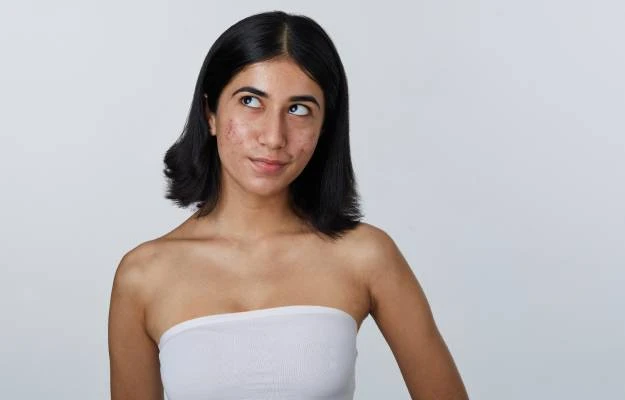Pimples can be frustrating, painful, and unpredictable. Whether it's a surprise breakout before an important event or a stubborn pimple that just won’t go away, finding the right solution is crucial. Many people turn to home remedies for pimples, but one common debate remains: should you use ice or heat? Let’s explore how these simple yet effective remedies work and which one is best for reducing pimple swelling and pain.
Understanding Pimples and Their Causes
Before diving into ice and heat therapy, it’s important to understand why pimples form. Pimples occur when pores become clogged with oil, dead skin cells, and bacteria. This leads to inflammation, redness, and swelling. Some pimples are painful, especially if they are deep under the skin.
Now, let’s break down the effectiveness of ice and heat for treating pimples.
Ice for Acne: Does Ice Help Acne?
Ice is a popular home remedy for pimples, and for good reason. Cold therapy works by constricting blood vessels, reducing swelling, and numbing pain. Here’s how ice can help:
Benefits of Using Ice for Pimples
- Reduces Inflammation & Swelling: Ice helps shrink blood vessels, reducing redness and swelling, making pimples less noticeable.
- Numbs Pain: If you have a painful pimple, applying ice can provide instant relief.
- Controls Oil Production: Cold temperatures can slow down oil production, preventing clogged pores.
- Minimizes Pore Size: Ice can temporarily tighten pores, making it harder for bacteria and dirt to get trapped.
How to Use Ice for Pimples
- Wrap an ice cube in a clean cloth (never apply ice directly to the skin as it can cause frostbite).
- Hold the wrapped ice on the pimple for 1-2 minutes.
- Remove it for a few minutes and then reapply.
- Repeat this process 2-3 times a day for best results.
So, is ice good for pimples? Absolutely! It’s a quick and effective way to reduce pimple swelling and pain.
Heat Therapy for Acne: Does It Work?
While ice helps reduce inflammation, heat therapy works in the opposite way—it increases blood circulation and promotes healing. Heat can be useful for certain types of pimples, especially those that are deep under the skin.
Benefits of Heat Therapy for Acne
- Opens Up Pores: Heat helps open clogged pores, allowing pus and bacteria to come to the surface.
- Speeds Up Healing: Increased blood flow helps the skin heal faster.
- Soothes Pain: Warmth can provide relief from deep, painful cystic acne.
How to Use Heat for Pimples
- Soak a clean washcloth in warm (not hot) water.
- Gently press the warm cloth against the pimple for 10-15 minutes.
- Repeat this process 2-3 times a day.
- Follow up with a gentle acne treatment to prevent further breakouts.
Heat therapy for acne is especially useful for pimples that have not yet surfaced, helping them heal faster without forcing them to pop.
Ice vs. Heat: Which One Should You Use?
The choice between ice and heat depends on the type of pimple you have.
- For Red, Swollen Pimples: Use ice to reduce inflammation and numb pain.
- For Deep, Painful Pimples: Use heat to encourage drainage and speed up healing.
- For Quick Relief: Ice works instantly to reduce swelling, while heat takes longer but can help prevent future breakouts.
In some cases, alternating between ice and heat may be beneficial. Start with ice to reduce swelling, then apply heat later to promote healing.
Additional Tips for Pimple Treatment
Using ice or heat alone may not be enough to completely clear pimples. Here are some extra tips to enhance your acne-fighting routine:
- Use a Gentle Cleanser: Wash your face twice daily to remove dirt and excess oil.
- Apply Spot Treatments: Use acne-fighting ingredients like benzoyl peroxide or salicylic acid.
- Stay Hydrated: Drink plenty of water to keep your skin healthy.
- Avoid Popping Pimples: Popping can lead to scarring and more breakouts.
- Maintain a Healthy Diet: Avoid excessive sugar and dairy, which may trigger acne.

The Verdict: Ice and Heat Both Have Their Place
Both ice and heat have their own benefits in treating pimples. Ice is best for reducing pimple swelling and pain, while heat helps speed up the healing process for deeper breakouts. Understanding when to use each method can help you effectively manage acne and keep your skin clear.
For best results, combine these methods with a dermatologist-recommended acne treatment like AcneStar gel, which fights bacteria and reduces breakouts, ensuring clearer skin over time.
Next time you spot a pimple, assess its type and choose the right remedy. Whether it’s an ice cube for immediate relief or a warm compress for deep healing, you’ll be one step closer to healthier, clearer skin.













